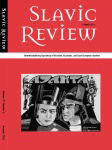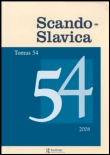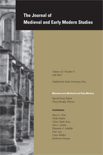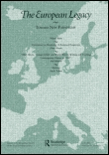
Studia Slavica et Balcanica Petropolitana
Scope & Guideline
Advancing Interdisciplinary Insights into Slavic and Balkan Studies
Introduction
Aims and Scopes
- Cultural History and Heritage Studies:
The journal emphasizes the examination of cultural artifacts, historical narratives, and the evolution of traditions within Slavic and Balkan societies, reflecting on their significance in contemporary contexts. - Interdisciplinary Approaches:
Utilizing methodologies from history, anthropology, art history, and literary studies, the journal encourages a holistic understanding of the subjects it covers, fostering dialogue between different academic disciplines. - Focus on Religious and Ideological Constructs:
Many papers delve into the religious influences and ideological developments in Eastern Europe, particularly the role of Orthodoxy and its impact on national identities and cultural expressions. - Exploration of Ethnic and National Identities:
The journal addresses themes of ethnicity and nationalism, particularly how these constructs have shaped historical narratives and cultural expressions in Slavic and Balkan contexts. - Historical Revisionism and Source Analysis:
There is a consistent focus on revising historical interpretations and analyzing primary sources to uncover new insights into the past, particularly regarding medieval and early modern periods.
Trending and Emerging
- Cultural Memory and Identity:
There is a growing trend towards exploring concepts of cultural memory and identity, particularly how historical narratives shape contemporary national and ethnic identities in Slavic and Balkan regions. - Artistic Representations and Interpretations:
Recent articles increasingly focus on the analysis of art and aesthetics, examining how visual culture reflects and constructs historical narratives and social ideologies. - Intercultural Exchange and Interaction:
Emerging themes highlight the significance of intercultural exchanges, particularly in contexts of migration and diaspora, reflecting on how these interactions influence cultural identities. - Religious Dynamics and Conflicts:
The study of religious dynamics, particularly the interplay between Orthodox Christianity and other faiths, is gaining traction, reflecting current sociopolitical climates in the region. - Revisiting Historical Figures and Events:
There is an increasing interest in revisiting and reinterpreting notable historical figures and events, suggesting a shift towards critical engagement with established historical narratives.
Declining or Waning
- Military History Focus:
While military history was once a prominent theme, recent publications suggest a waning interest in this area, with fewer articles dedicated to military campaigns or tactics compared to previous years. - Soviet Era Studies:
The exploration of Soviet-era history and historiography has seen a decline, possibly due to a shift towards more contemporary issues or a broader focus on pre-Soviet cultural heritage. - Ethnographic Studies:
Papers focusing on ethnographic studies of specific Slavic or Balkan groups are less frequent, indicating a potential shift towards more generalized cultural or historical analyses. - Local Historical Narratives:
There seems to be a reduction in articles dedicated to very localized historical narratives, suggesting a trend towards broader thematic explorations that encompass larger regional or national contexts.
Similar Journals

JOURNAL OF THE WARBURG AND COURTAULD INSTITUTES
Connecting Art History with Contemporary DialogueWelcome to the JOURNAL OF THE WARBURG AND COURTAULD INSTITUTES, a distinguished scholarly publication dedicated to the study of art history, cultural studies, and the interconnections between visual arts and intellectual history. Established in 1964 and published by the Warburg Institute, this journal serves as a vital platform for innovative research and interdisciplinary scholarship. Although it currently holds a Q4 ranking in both Arts and Humanities (Miscellaneous) and Cultural Studies, the journal is committed to fostering critical discourse that transcends conventional boundaries. With an ISSN of 0075-4390 and an E-ISSN of 2044-0014, the journal provides accessible insights for researchers, professionals, and students interested in the evolving landscape of cultural heritage studies. While the journal is not currently open access, its contributions are invaluable for those seeking to deepen their understanding of the intricate relationship between culture and the arts. We invite you to explore the journal's rich archive and engage with the latest academic dialogues shaping the field.

SLAVIC REVIEW
Exploring the Depths of Slavic Culture and History.SLAVIC REVIEW, published by Cambridge University Press, is a prominent academic journal that delves into the rich tapestry of Slavic studies, focusing on the cultural, historical, and social dimensions of Slavic regions. With an ISSN of 0037-6779 and an E-ISSN of 2325-7784, this journal holds a significant position within the academic community, ranking in the Q2 category of Arts and Humanities (miscellaneous) and achieving a Q1 rating in Cultural Studies as of 2023. Notably, the journal has consistent relevance in the field, as evidenced by its Scopus rankings—Rank #260 in Cultural Studies and Rank #204 in Miscellaneous Arts and Humanities. Since its converged years starting from 1966 up to the present, SLAVIC REVIEW has been an essential resource for researchers, professionals, and students aiming to deepen their understanding of Slavic cultures. While it operates on a traditional subscription model and does not provide open access, the journal remains a vital platform for pioneering research and critical discourse in Slavic studies.

Scando-Slavica
Bridging Cultures: A Journey Through Scando-Slavic ConnectionsScando-Slavica is a renowned academic journal published by ROUTLEDGE JOURNALS, TAYLOR & FRANCIS LTD, specializing in the rich interplay of Scandinavian and Slavic studies. With its ISSN 0080-6765 and E-ISSN 1600-082X, the journal has been a critical resource for scholars since its inception in 1954, covering a wide range of disciplines including archaeology, cultural studies, history, linguistics, and literature. As of 2023, it has consistently ranked in the third quartile across various categories, indicating its influential role in disseminating innovative research within the arts and humanities. With a focus on interdisciplinary dialogue, Scando-Slavica aims to foster a deeper understanding of cultural exchanges and linguistic connections, making it an essential read for researchers, professionals, and students interested in exploring the complexities of Nordic and Slavic interactions. While currently not an open access journal, its contributions have garnered substantial citations, bolstering its academic impact and relevance in a diverse scholarly landscape.

Slovo
Fostering Scholarly Dialogue on Slavic HeritageSlovo, published by the University College London, School of Slavonic & East European Studies, is a vital scholarly journal dedicated to the exploration of Slavic languages and cultures, as well as the broader social sciences and humanities. Established with a commitment to advancing academic discourse, Slovo serves as a platform for researchers, professionals, and students interested in the dynamic intersections of literature, history, and cultural studies within Slavic and Eastern European contexts. Although it holds a Q4 ranking in both the Arts and Humanities and Social Sciences categories, the journal’s emphasis on fresh perspectives often invites innovative contributions that challenge conventional narratives. While lacking an Open Access option, Slovo remains integral for those seeking to navigate its multifaceted terrain, ensuring that emerging scholars and established academics alike can engage with rigorous research from 2012 to 2023 and beyond. With its headquarters in London, United Kingdom, this journal not only reflects the rich heritage of its academic lineage but also fosters a vibrant community committed to the exploration of Slavic and East European studies.

JOURNAL OF MEDIEVAL AND EARLY MODERN STUDIES
Bridging Eras Through Critical ScholarshipThe JOURNAL OF MEDIEVAL AND EARLY MODERN STUDIES, published by DUKE UNIVERSITY PRESS, is a distinguished platform dedicated to exploring the intricacies of medieval and early modern cultures through an interdisciplinary lens. With an ISSN of 1082-9636, this journal has been pivotal in advancing scholarship from 2002 to 2024, providing researchers, professionals, and students with insightful contributions that enhance understanding within the fields of Arts and Humanities and Cultural Studies. With its current standing as Q3 in both category quartiles for 2023 and respectable ranking in Scopus, this publication attracts a diverse readership and stimulates critical conversations about historical narratives and cultural phenomena. Although not an open-access journal, its rich content serves as an invaluable resource for those seeking to delve deeper into the complexities of past societies. The journal’s commitment to excellence in scholarship underscores its vital role in the academic community.

Quiroga-Revista de Patrimonio Iberoamericano
Celebrating Ibero-American Heritage Through Innovative ResearchQuiroga-Revista de Patrimonio Iberoamericano, published by UNIV GRANADA, is a distinguished open-access journal dedicated to the fields of conservation, museology, and the visual and performing arts. Since its inception in 2012, the journal has provided a platform for scholars and practitioners to disseminate innovative research and critical discussions pertinent to Ibero-American heritage. With a growing impact, evidenced by its category quartiles ranking—Q3 in Conservation and Q2 in both Museology and Visual Arts and Performing Arts—as well as its Scopus rankings, Quiroga serves as an essential resource for researchers, professionals, and students who engage with the complexities of cultural preservation and artistic expression. The journal’s commitment to open access ensures the widespread availability of knowledge, fostering academic dialogue and collaboration within the global community. For inquiries, the journal can be reached at their offices located in Granada, Spain.

Konstantinove Listy-Constantines Letters
Connecting the past with contemporary scholarship.Konstantinove Listy - Constantines Letters is a premier academic journal published by the Constantine Philosopher University in Nitra, Slovakia. With a focus on the interdisciplinary exploration of historical, philosophical, and religious studies, this journal has established itself as a significant platform for scholarly discourse since its inception in 2015. The journal's impressive rankings—Q1 in History and Religious Studies, along with Q2 in Philosophy—demonstrate its commitment to high-quality research, concurrent with its strong performance in Scopus rankings, placing it in the 80th percentile for both Religious Studies and History disciplines. As an integral part of the academic landscape, Konstantinove Listy invites researchers, professionals, and students alike to contribute to its mission of advancing knowledge and understanding in these vital fields. While the journal operates under traditional publishing, it is recognized for its accessibility and contribution to fostering a vibrant scholarly community.

European Legacy-Toward New Paradigms
Exploring the Rich Tapestry of European HeritageEuropean Legacy-Toward New Paradigms is a distinguished academic journal published by Routledge Journals, Taylor & Francis Ltd, focusing on interdisciplinary approaches to cultural studies, history, and philosophy. With an ISSN of 1084-8770 and an E-ISSN of 1470-1316, this journal has made significant contributions to the understanding of European heritage and its impact on contemporary thought and society since its inception in 2001. It currently holds a Q3 ranking in Cultural Studies, History, and Philosophy, reflecting its relevance and scholarly impact within the academic community. Although not an Open Access journal, European Legacy provides valuable insights and research findings through its carefully curated articles, making it an essential resource for researchers, professionals, and students alike. The journal's commitment to exploring new paradigms fosters critical dialogue and encourages innovative perspectives on Europe’s complex legacies, thereby positioning itself as a vital platform for ongoing academic discourse.

Heranca-Revista de Historia Patrimonio e Cultura
Unveiling Stories of Our Cultural HeritageHerança - Revista de História, Patrimonio e Cultura is a distinguished academic journal published by Ponteditora in Portugal, dedicated to the exploration and preservation of history, heritage, and culture. Since its inception in 2018, this open-access journal has established a strong foothold in the academic community, becoming a valuable resource for researchers, professionals, and students alike. With an impressive presence in the Scopus rankings—ranking Q3 in multiple categories such as *Arts and Humanities (Miscellaneous)* and *Cultural Studies*—the journal demonstrates its commitment to advancing interdisciplinary dialogue and fostering innovation in the humanities. By offering unrestricted access to its rich array of scholarly articles, Herança plays a vital role in disseminating knowledge and promoting further research in the fields of history, museology, and the arts. With an aim to bridge theoretical insights and practical applications, this journal stands as an essential contributor to the cultural landscape and heritage studies, making it a pivotal platform for contemporary issues in our understanding of cultural identity and heritage conservation.

Memoria y Civilizacion-Anuario de Historia
Elevating Historical Scholarship to New HeightsMemoria y Civilizacion-Anuario de Historia, published by UNIV NAVARRA, SERVICIO PUBLICACIONES, is a prestigious open-access journal that has been serving the academic community since 1998. With a focus on historical research, this journal contributes significantly to the field by offering a platform for scholars to disseminate their findings and engage in critical discussions. With its Q1 ranking in History for 2023 and a solid position in the Scopus listings (Rank #905/1760), it underscores its importance in the humanities, ensuring that quality research reaches a wide audience. The journal is based in Spain and is committed to open access, providing free availability of its content to promote wider dissemination of knowledge. Researchers, professionals, and students alike will find Memoria y Civilizacion-Anuario de Historia to be an indispensable resource for historical inquiry and scholarship.